Don Pedro Menendez de Aviles was commissioned by King Philip II of Spain in 1564 to conquer Florida and eliminate the French Huguenot presence at Fort Caroline. Menendez commanded the great Spanish Treasure Fleet and brought four Catholic priests with him.
Father Francisco Lopez de Mendoza Grajales held the first Mass, founded the first mission, and was the first parish priest in the new world. His legacy is commemorated with an eleven-foot statue bearing his likeness and the Great Cross, a 208-foot tall steel cross at the Mission Nombre de Dios.
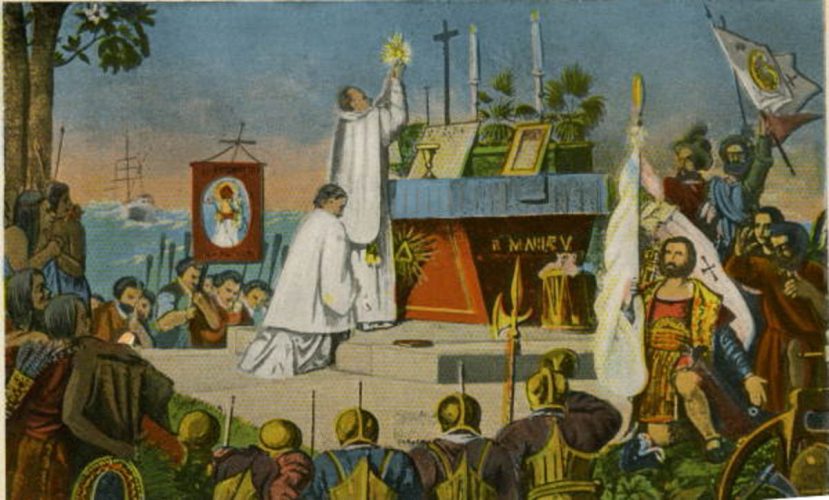
The Spanish fleet reached land on August 28th, St. Augustine of Hippo’s feast day, for which the new city was named and officially founded on September 8. Once Menendez secured the city for Spain and defeated the French, he began to evangelize to the Timucua natives, appointing soldiers he deemed fit to give religious instruction. America’s first Thanksgiving Mass was held at the Mission site. St. Francis Borgia sent a number of Jesuits to St. Augustine between 1566 and 1568, and Franciscan missionaries arrived in 1577.
British colonists gained power and occupied the area by the 1760s and, although freedom of worship was guaranteed, defaced Catholic structures were the only evidence of the faith. Around 1780, the Spanish crown sent Fathers Hassett and O’Reilly to St. Augustine to re-establish the Catholic faith. Father O’Reilly would establish the parish rectory (now the Father Miguel O’Reilly House Museum) and dedicated the new parish church, which now operates as the Cathedral Basilica.
O’Reilly privately taught Felix Varela, who became a priest, author, and human rights advocate for Cuban independence. Varela greatly influenced the course of education in the Diocese of St. Augustine. After the Civil War, he recruited the Sisters of St. Joseph from France to teach newly freed African American children and the St. Benedict the Moor School was built in 1871.
To experience St. Augustine’s Catholic history through art, architecture, and authentic Spanish food, visit the sites listed below.
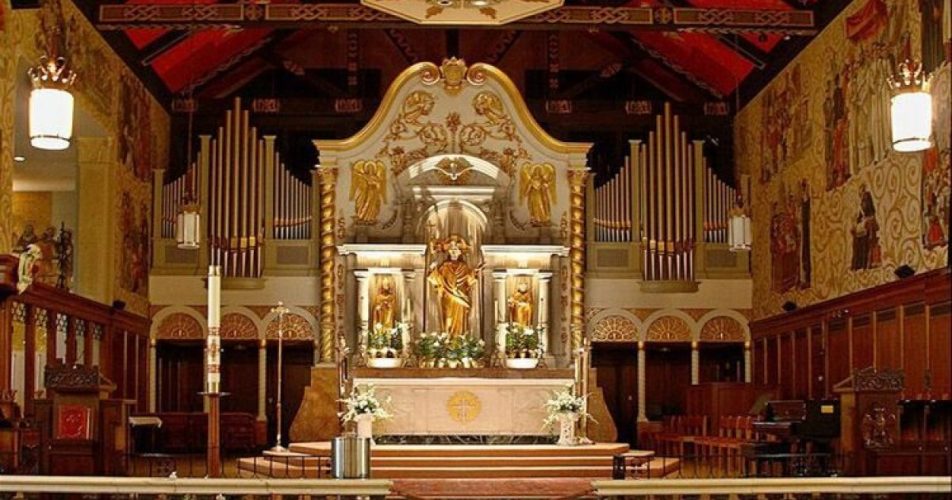
America’s first Catholic parish was established in St. Augustine upon the city’s founding in September 1565. The Cathedral Basilica at 38 Cathedral Place in historic downtown St. Augustine is the oldest in Florida and the seat of the Bishop of the Diocese.
Originally built by sailors and soldiers with no architectural experience, the first parish was lost in 1586 during Drake’s Raid and the second in 1599 when deteriorated straw and palmetto caught fire. A third was built in 1605 with lumber but caught fire again in 1707 due to environmental conditions and lack of maintenance. For almost 90 years, St. Augustine did not have a physical church, and services were held in a local hospital.
The cornerstone of the basilica you see today was laid in 1793 and construction was completed in 1797. The church suffered yet another fire in 1887 that impacted many buildings in the area, but the coquina structure was salvaged and New York City architect James Renwick, Jr. was chosen to renovate the building. Henry Flagler helped to fund a major reconstruction that enlarged the cathedral with a dramatic, soaring ceiling and a bell tower reminiscent of Spanish Missions.
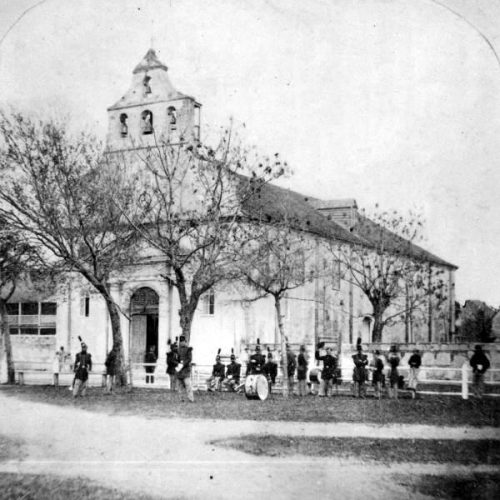
In 1966, in honor of St. Augustine’s 400th Anniversary, the congregation renovated the cathedral and added the Blessed Sacrament Chapel to dedicate the event. It was designated a US National Historic Landmark on April 15, 1970, and in 1976, Pope Paul VI elevated the Cathedral to a minor basilica status, the 27th church in the United States to receive this honor. The recognition of the cathedral as a minor basilica establishes the historic significance of the parish to the Catholic Church.
Today, visitors can see the church as it was in the late 1700s. The façade is a combination of Spanish Mission and Neoclassical architectural styles with an exquisitely decorated interior complete with Victorian stained glass windows, oil paintings copied from the Vatican’s Pauline Chapel, marble altars, and a grand display of 56 organ pipes.
Guided tours are available by appointment only. Click here to learn more.
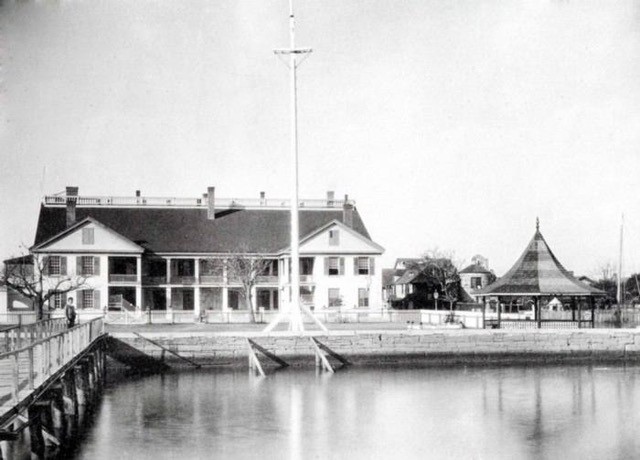
Located on Marine Street, the St. Francis Barracks was constructed of coquina between 1724 and 1755 by Franciscan friars. The barracks were converted for military use when Florida was possessed by the British in 1763. In 1821, Florida would be claimed by the United States and the US Army took control of the barracks until deactivation in 1900 when it was leased to Florida State Troops, the forerunner of the present-day National Guard, in 1907. In 1921, an act of Congress formally gave the barracks to the State of Florida to operate as the State Arsenal. The structure was rebuilt in 1922 using the original coquina walls.
Today, the St. Francis Barracks headquarters the Florida Army National Guard and the Florida Air National Guard, headed by an Army or Air Force officer as The Adjunct General and their associated staff.
Visit the museum dedicated to St. Augustine’s military history and see the collection of works from Florida history painter, Jackson Walker. Contact the St. Francis Barracks to schedule an appointment to tour the museum.
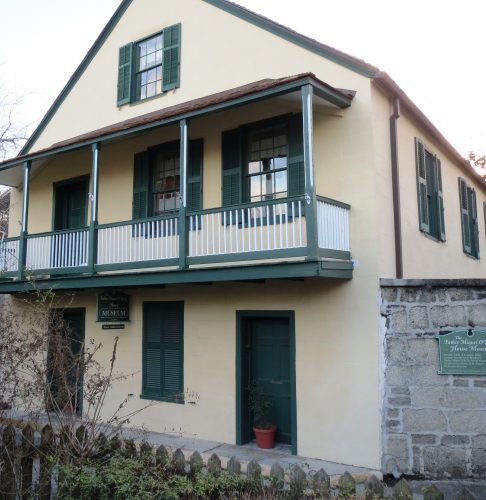
The Father Miguel O’Reilly House Museum was built during the first Spanish period and is one of the oldest structures in St. Augustine, situated in the oldest continuously settled neighborhood. Made of tabby and coquina, the building was constructed in 1691 and purchased by Father Miguel O’Reilly in 1785. The Irish priest served under the Spanish crown and transformed the building into a place of spirituality and education to preserve old Catholic values. The Father O’Reilly House was left to the Sisters of St. Joseph who have preserved the museum since 1866.
Located on historic Aviles Street, the museum focuses on the history of the house, the Catholic tradition kept alive since 1565, and the story of the Sisters of St. Joseph. This museum is rich in history and shows guests exactly how Saint Augustine looked in the days of Father Miguel O’Reilly. There is a beautiful garden and six rooms in the house, all of which are open to the public. The museum highlights the city’s history with artifacts like musical instruments, old lesson plans, and documentation of the Catholic tradition.
Open to the public since 2003, admission to the museum is free, but donations are gratefully accepted. See the virtual tour here.
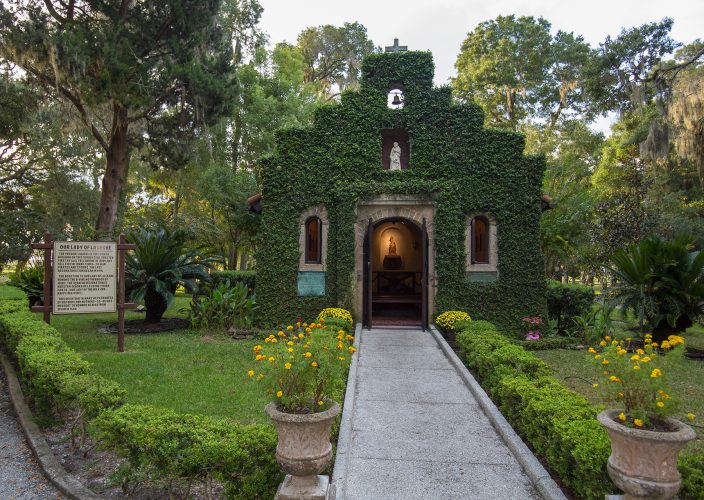
Mission Nombre de Dios traces its origins to the founding of the City of St. Augustine, the oldest in America, in 1565. On September 8, 1565, Pedro Menéndez de Avilés landed and proclaimed this site for Spain and the Church. It was here that Menéndez knelt to kiss a wooden cross presented to him by Father Francisco López de Mendoza Grajales, chaplain of his expedition.
It was on these grounds that Friar López would celebrate the first parish Mass and begin the work at America’s first mission. It was at this sacred spot that the Spanish settlers would begin the devotion to Our Lady of La Leche that continues into the present.
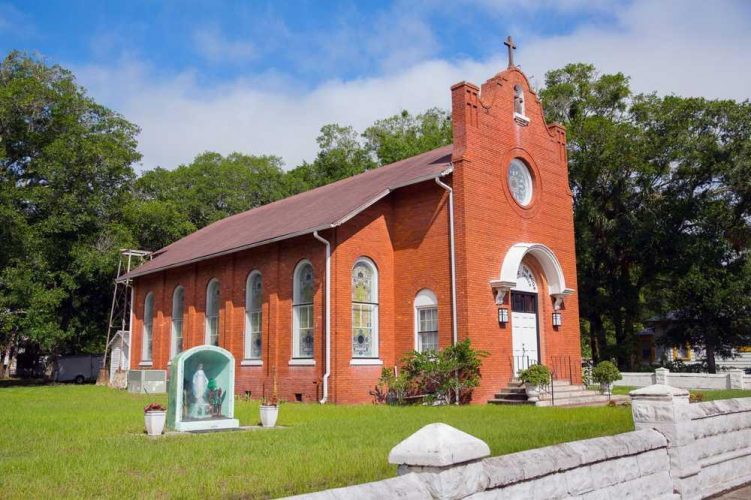
Historic Lincolnville is home to St. Benedict the Moor, the first African American parish of the St. Augustine Catholic Diocese, named for a Sicilian friar known for service to his community despite illiteracy and humble means.
In 1871, the St. Joseph Society of the Sacred Heart vowed to serve and minister to newly freed slaves. In 1892, Josephite Bishop John Moore acquired land in St. Augustine that once was part of the Yallaha plantation orange grove and began to develop the site for a church and school. The first building erected in 1898 is now the oldest surviving brick schoolhouse in St. Augustine and one of the first schools for black children in Florida. Construction of the parish church began in 1909, then completed and consecrated in 1911. The rectory was completed in 1915.
The buildings have seen many important moments in civil rights history. In 1916, Sisters Mary Thomasine, Mary Scholastica, and Mary Beningus were arrested under Jim Crow laws that prohibited white teachers from teaching black students. The three sisters were quickly acquitted when a judge ruled the law did not apply to private schools.
In 1964 Martin Luther King, Jr. used the rectory to plan marches and demonstrations to support the civil rights movement, events that played a significant part in the passage of the Civil Rights Act. The school closed soon after, partly because of desegregation legislation. The school building is listed on the National Register of Historic Places and, along with the Church and Rectory, may be seen today at 82 Martin Luther King Avenue.
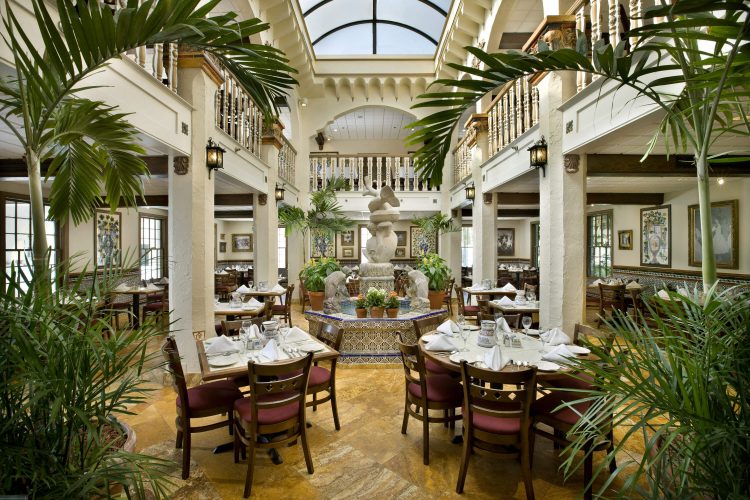
This family-owned establishment has a stunning old-world European charm. The Columbia serves an award-winning Spanish/Cuban menu made from over five generations of family recipes and boasts a wonderful selection of wines.
The Mediterranean-style dining room is adorned with hundreds of hand-painted tiles and Spanish fountains for a gorgeous setting to enjoy their famous 1905 salad, paella, roast pork a la Cubana, and fresh seafood sourced from the Gulf of Mexico. Conveniently located in the heart of downtown with ample parking available, the Columbia is sure to delight and impress.
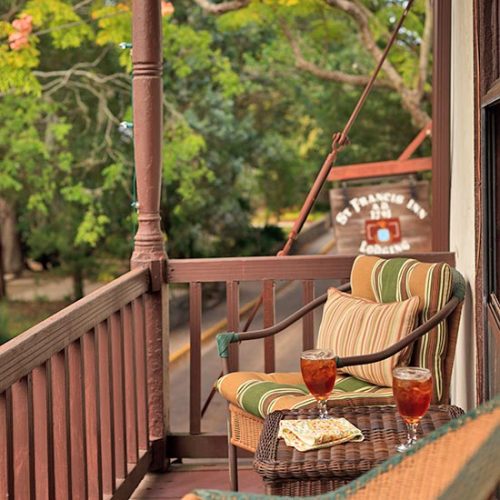
Your Spanish tour of St. Augustine does not have to stop at the steps of your hotel! St. Francis Inn was built in 1871 during the Second Spanish Colonial period and is in fact St. Augustine’s oldest inn.
The building itself embodies the city’s history and culture as the architecture reflects how the King of Spain ordered residents to build their homes to protect against those who threatened to occupy the town. The building stands directly on the street with fencing and dense shrubbery to shield the front entrance and courtyard where visitors can relax under the trees and listen to the fountains nearby.
Located on St. George Street, a few minutes south of historic downtown, you are within walking distance of all the city has to offer, but far enough away to avoid the hustle and bustle.